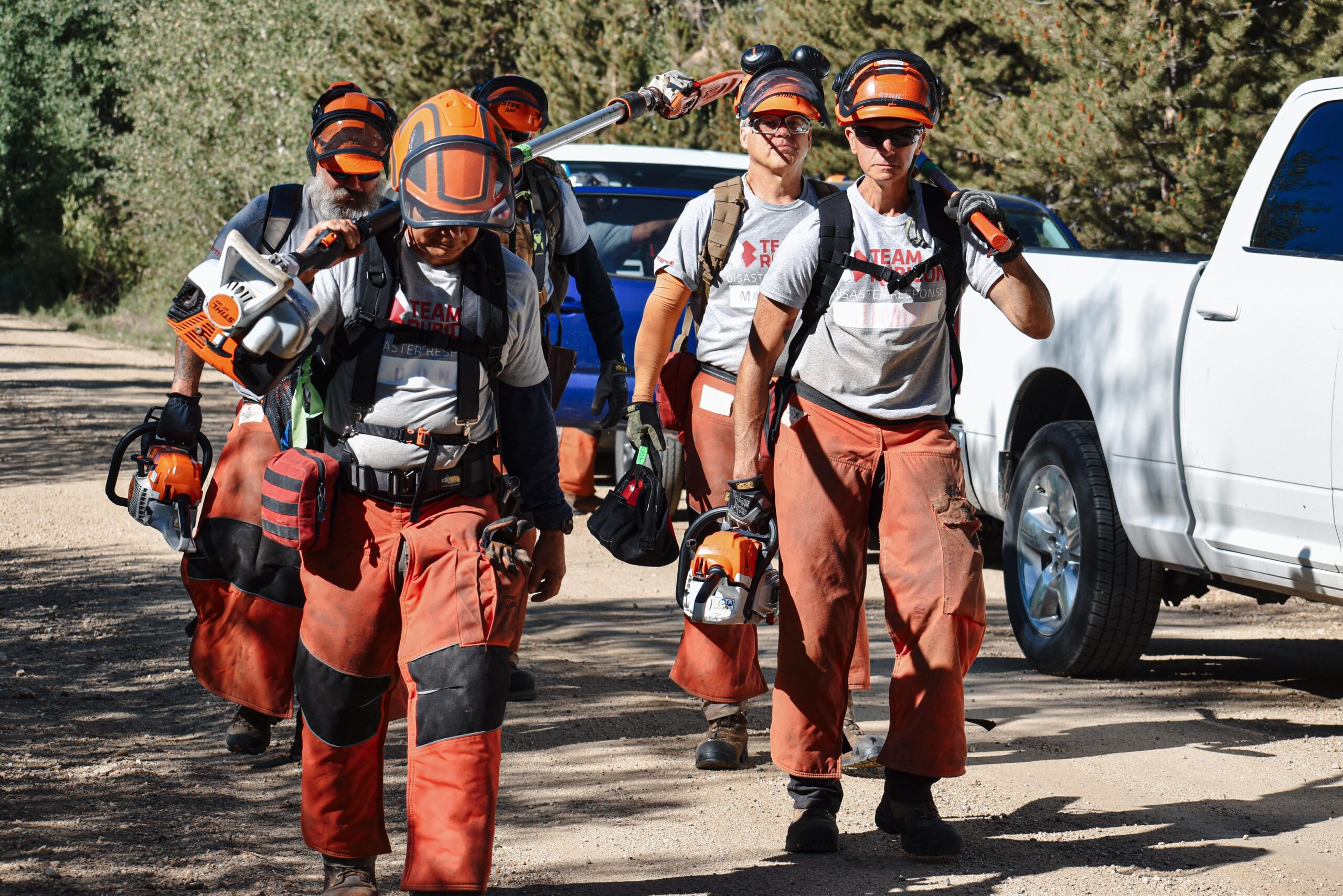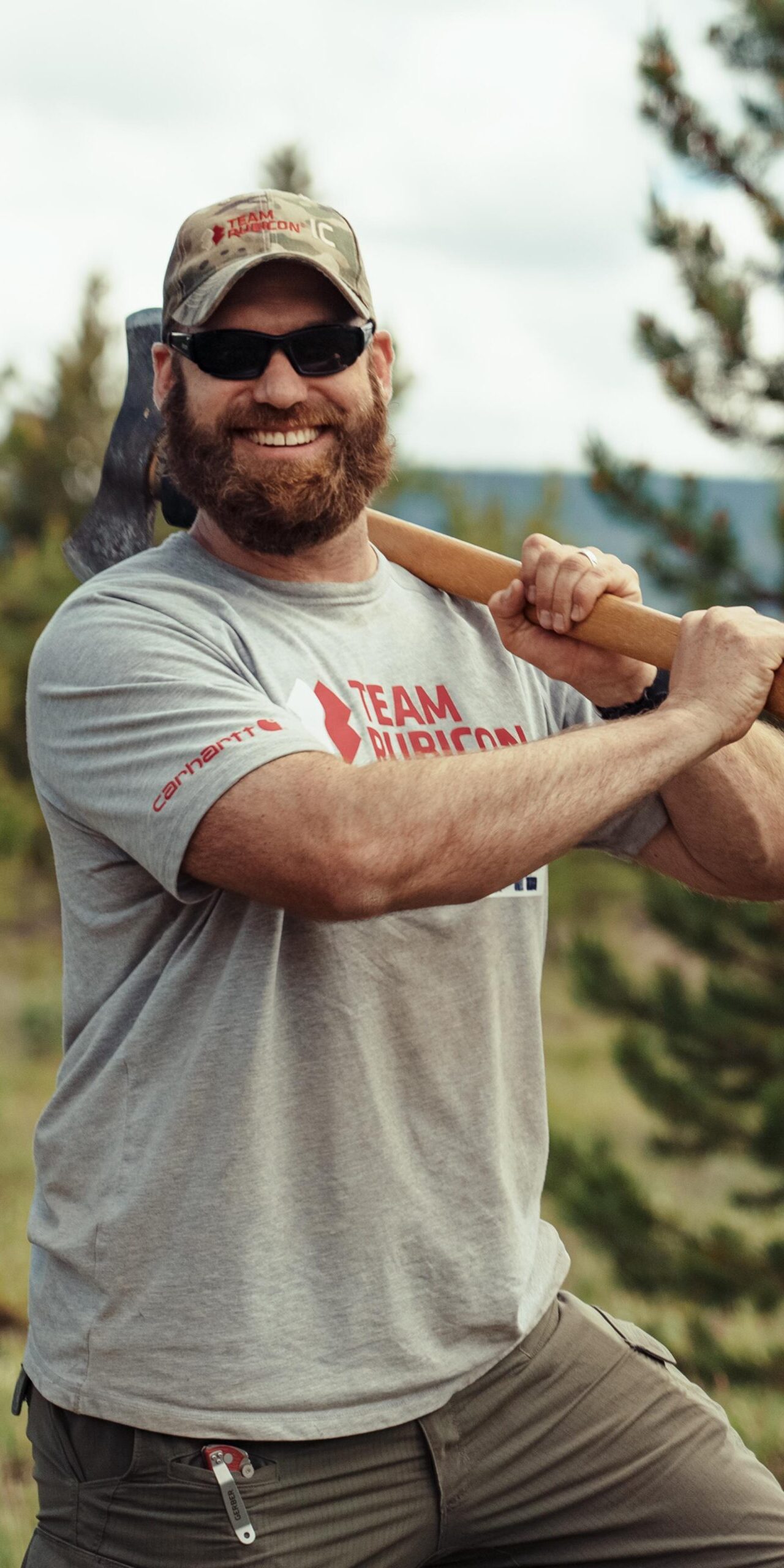The West Branch has focused on mitigating wildfire risks to communities for the last few years. In fact, in 2023 alone, Team Rubicon has already completed 29 wildfire mitigation services operations in the U.S. and Canada. As the lines between wildlands and neighborhoods continue to blur, and with the potential for wildfires seemingly on the constant rise, any number of communities across the West Branch would benefit from the knowledge and experience our Greyshirts have. Let’s look at how Metro Teams and Mission Planning Teams, or MPTs, can identify and focus their attention on mitigation operations that will provide the greatest good for the most people and affect the most area with our resources, for the longest time.
Why TR Leads the Way in Wildfire Mitigation Services
TR is unique in the wildfire mitigation sphere because we focus on the house out, not from the forest in. All three of TR’s wildfire mitigation services capabilities—Home Ignition Zone (HIZ) assessment and mitigation; fuel breaks creation, and fuel reductions—support this focus.
Another thing that makes us unique in the mitigation space is that TR can conduct mitigation services virtually wherever there is need. While most fire agencies can only work within their jurisdictions—federal fire agencies on federal land; state agencies on state land, for example—and most government agencies generally can’t work on private land at all, Team Rubicon can work across jurisdictions, including on private, state, and federal lands.
And then, of course, there’s the cost: As with all of our work, Team Rubicon and its volunteers provide mitigation services at no cost to the community.
Understanding HIZ, Fuel Breaks, Fuel Reductions, and How Greyshirts Get Mitigation Done
The most significant hazard during a wildfire is windblown embers landing in, on, or next to a structure or a home. More than a decade of research shows the most effective way to protect buildings from windblown embers is to “harden” the building with fire-resistant materials, screening vents (effectively blocking embers), and by clearing flammable material. When one removes flammable material in the immediate area (roughly 100 feet) around the building, this is called HIZ.

When Team Rubicon conducts wildfire mitigation services for a community, one of the first things it does is conduct HIZ assessments. Any Greyshirt who has taken the two online trainings provided by the NFPA can assess homes for wildfire hazards and educate the homeowners about wildfire risks. Once the HIZ assessment is complete, Greyshirts can mitigate the identified risks using chainsaws and hand tools around the home.
TR’s second mitigation capability is to create fuel breaks around homes and within communities. Fuel breaks are linear areas of thinned vegetation along roads and ridgelines that protect evacuation routes and communities.
Lastly, Team Rubicon is capable of providing fuel reduction during a mitigation project. Fuel reduction means removing and reducing wildfire fuels, such as dry grass, fallen trees, dead tree limbs, logs, and shrubs around homes and within communities. Additionally, fuel reductions are nonlinear areas of thinned vegetation that should be strategically connected to other fuel treatments and burns or other natural or manmade fire-resistant areas.
How to Identify Wildfire Mitigation Operation Opportunities and Get Boots on the (Unburnt) Ground
Now that we know what TR can do, let’s discuss how to find a “good” wildfire mitigation services operation. An excellent place to start is by asking your local fire department, fire-adapted communities organization, or Firewise community about unfinished projects in their Community Wildfire Protection Plan (CWPP). Planners will want to target communities and neighborhoods identified as high need and/or high risk. Planners can find areas of high wildfire risk in CWPPs or wildfire hazard maps created by state Forestry or Natural Resource Departments, such as in Colorado State Forest Service or Washington Department of Natural Resources.
In many rural areas, the usual SVI maps are not detailed enough to locate high-need communities. Planners can ask local officials about high-need communities, such as neighborhoods composed largely of local workers, areas of primary residences (versus vacation homes), or clusters of students who receive free or reduced school lunches.

Once the Mission Planning Team has identified a potential community to serve, it’s important that the MPT discuss with the local officials and community leaders how TR’s work will benefit the community beyond our work sites, how this operation will connect with other mitigation efforts, and whether there are any environmental or cultural concerns to be cognizant of or other regulations or permits that TR needs to be aware of.
I often ask myself and other MPTs, “Why is this project/operation the best use of our Greyshirts time on this weekend?” There are many possible answers to this question, from capacity-building for a growing team to simply meeting the desire to help the most endangered community in the area. It’s essential to take a minute during the mission planning process to evaluate if TR is helping the people who need our services the most or simply the people who are the best connected and loudest.
Wildfire is a natural part of the ecosystem of the West, and it is up to us to adapt to the flames and smoke. Now is a great time to find projects and operations in your area before the fire starts threatening communities.

Duane Poslusny has served as a planner for Team Rubicon since 2015. Duane has brought to Team Rubicon broad experience with incident management and natural resource management and has served as mission planning team lead and incident commander for many wildfire mitigation operations across Colorado. His current focus is on protecting communities from the house-out, not the forest-in.



